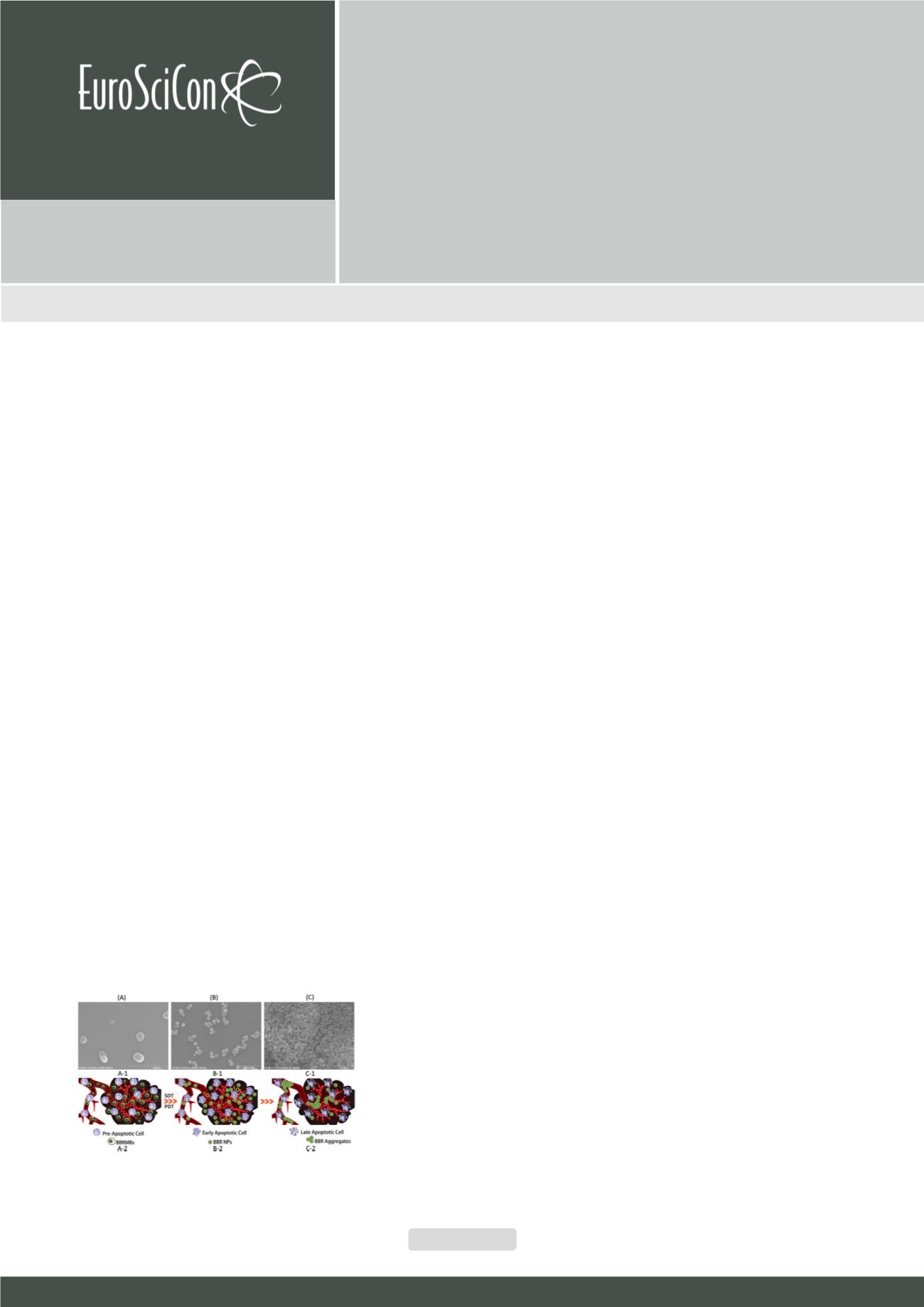

Page 80
Nano Research & Applications
ISSN 2471-9838
E u r o S c i C o n C o n f e r e n c e o n
Nanotechnology &
Smart Materials
O c t o b e r 0 4 - 0 6 , 2 0 1 8
Am s t e r d a m , N e t h e r l a n d s
Nanotechnology & Smart Materials 2018
H
ere we announce that berberine (BBR) nanostructure is a promising vascular
embolization agent for tumour therapy. It has been reported that BBR contributes
to tumour cells apoptosis by releasing reactive oxygen species (ROS) which triggers
PI3K-AKT-mTOR signalling pathway. This triggering step succeeds with either focused
laser beam (FLB) or focused ultrasound (FUS) under performances of photodynamic or
sonodynamic therapy (PDT or SDT), respectively. Moreover, ultrasonic diagnosis shows
that tumour vessels have been blocked after BBR-PDT or -SDT treatment
in vivo
. Further,
we investigate what’s behind and results point to self-assembly of BBR nanostructure,
from nano- to micro- and macro-size. Finally, tumour vascular embolization occurs.
Amphiphilic BBR chlorate tends to assemble into randomly nanostructures at room
temperature in aqueous. However, spherical BBR nanostructures increase with growing
temperature and BBR nanoparticles (BBRNPs) tends to monodisperse when we perform
FLB or FUS. After treatment, BBRNPs start to aggregate when temperature is going down.
Morphology studies from dynamic light scattering (DLS), scanning electron microscopy
and optical microscopy show that BBRNPs aggregation is continuously taking place and
finally ends up with macro-scale floccules. Though BBR is a commonly known photo- or
sono-sensitizer for ROS-tumour therapy, it is rarely reported about what is going on after
PDT or SDT therapy. Therefore, here we address BBRNPs aggregates as a promising
vascular embolization which can assist PDT or SDT cancer therapy in preclinical studies
Biography
Tingting Zheng has obtained her PhD degree from Leiden
University in Dec’ 2014 and continued with Postdoctoral
studies at Wageningen University. She is currently an Associate
Professor at Peking University Shenzhen Hospital. She has
published more than 25 papers in top journals and has been
serving as an Editor of
Open Chemistry
since 2015.
dr.tingting.zheng@gmail.comTumor vascular embolization therapy triggered via BBR
nanoparticle aggregation
Tingting Zheng
1, 2
, Hanqing Liu
1,2
, Yawen An
3
, Ziqian Zhou
1,2
,
Jiapu Jiao
4
, Azhen Hu
1, 2
, Minghua Li
1, 2
, Tao Pei
2
, Tao Yu
1
,
Huanhuan Feng
4
and Yun Chen
1, 2
1
PKU-HKUST, China
2
Peking University Shenzhen Hospital, China
3
Peking University Shenzhen Graduate School, China
4
Shenzhen Graduate School of Harbin Institute of Technology (HITSZ), China
Tingting Zheng et al., Nano Res Appl Volume:4
DOI: 10.21767/2471-9838-C6-024
Figure 1: Progress schematic diagram of berberine nanoparticle induced tumour vascular
embolization. (A) to (C)showsmorphologiesofberberinenanoparticles frommonodispersed
tooligo-aggregationandpoly-aggregation.Group1showsBBRscanningelectronmicroscopy
images of BBR nanoparticles in different stages of self-assembly. Group 2 illustrates process
of BBR nanoparticles self-assembly in tumour, following by early and late cell apoptosis.
UTMD technonics
















